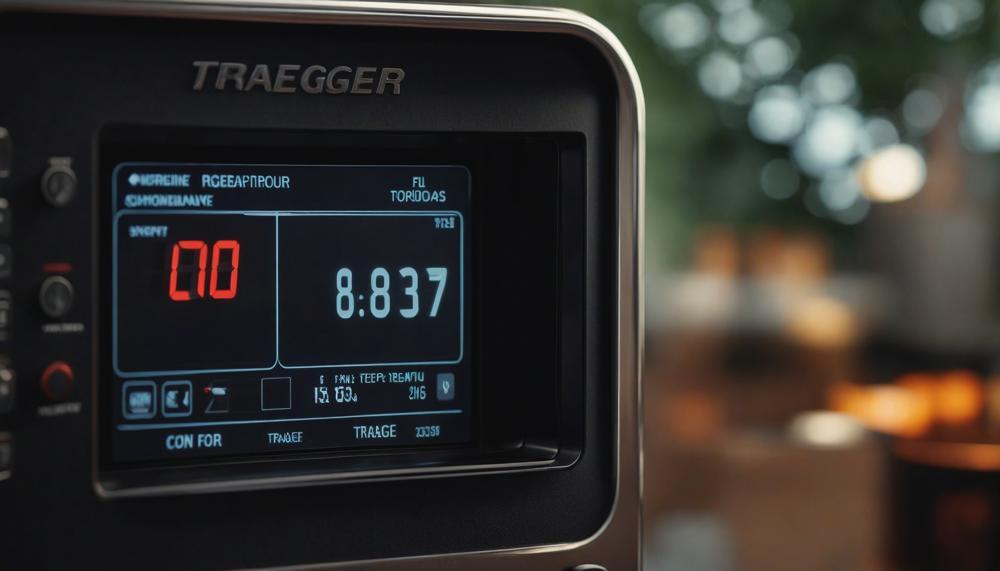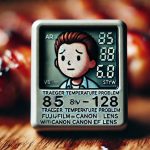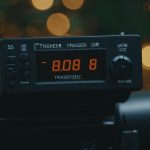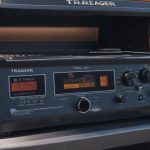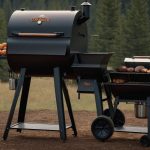Did you know that nearly 60% of pellet grill owners report temperature inconsistencies at some point during their grilling experience? This common hiccup can significantly affect the quality and flavor of your smoked and grilled dishes. If you own a Traeger Pro 34, encountering issues where your grill isn’t reaching the desired temperature can be especially frustrating, turning your backyard barbecue into an unintended slow-cook session.
In this blog post, we’re going to tackle the main reasons why your Traeger Pro 34 might not be heating up as it should and provide practical solutions to help you get back to grilling perfection:
- Pellet Problems: We’ll discuss how low-quality pellets or insufficient pellet levels can impair heat generation.
- Ignition Issues: Understand the role of the igniter in your grill’s performance and what to do if it’s malfunctioning.
- Airflow Blockages: Learn about the importance of maintaining clear airflow and how blockages can affect temperature control.
- Temperature Sensor Troubles: We’ll cover how dirt or damage to the temperature sensor can lead to inaccurate readings and how to fix it.
- Maintenance Tips: Regular cleaning and maintenance tips to keep your Traeger Pro 34 operating at peak efficiency.
Whether you’re a seasoned griller or a novice smoker, knowing how to troubleshoot and maintain your grill is essential for ensuring a delicious outcome every time you fire it up. Let’s get your Traeger back to its best and ensure that your next grilled meal is a smoky success.
Contents
Is There a Temp Error Code Showing on the Control Board Screen?
| Possible Cause | Explanation | Fix |
| Low Pellet Levels | Insufficient fuel can cause the grill to drop below the set temperature, triggering a LEr (Low-Temperature Error). | Ensure the pellet hopper is adequately filled with high-quality pellets. |
| Blocked Auger | An obstruction in the auger can prevent pellets from feeding into the firepot, leading to temperature drops. | Check and clean the auger of any pellet dust or debris to ensure smooth pellet delivery. |
| Dirty RTD Probe | A dirty or faulty RTD (Resistance Temperature Detector) probe can give incorrect temperature readings. | Clean the RTD probe carefully with a soft brush and recalibrate if necessary. If issues persist, replace the probe. |
| Improper Startup Procedure | Not following the correct startup sequence can lead to heating problems. | Refer to the user manual to execute the correct startup procedure. Typically involves ensuring the lid is open during start and pre-heating. |
| Weather Conditions | Extreme wind or cold can affect the grill’s ability to maintain temperature. | Shield the grill from wind and maintain a clean, clear exhaust system to reduce temperature fluctuations. |
| Power Issues | Fluctuating or insufficient power supply can cause the control board to malfunction. | Ensure the grill is connected to a stable power source. Consider using a surge protector. |
| High “Turbo” Mode Settings | Setting the grill on a very high temperature setting can lead to overheating and error codes. | Avoid using excessively high settings on ‘Turbo’ mode that are beyond what is recommended for your cooking needs. |
To resolve temperature error codes on your Traeger Pro 34, start by checking and filling the pellet hopper to ensure sufficient fuel levels. Next, inspect and clean the auger and RTD probe to remove any blockages or buildup that could affect performance. Follow proper startup procedures as outlined in your manual and adjust your setup to protect the grill from adverse weather conditions. Ensure that the grill is connected to a reliable power source to avoid electrical issues.
Finally, moderate the use of ‘Turbo’ mode to prevent overheating. Regular maintenance and care of these components will greatly reduce the occurrence of error codes and maintain optimal functioning of your Traeger grill. For persistent issues, contact Traeger’s customer support for expert assistance.
Traeger Not Hot – Maintenance/Procedure and Product Issues
When your Traeger Pro 34 isn’t heating up as it should, it’s often due to a handful of maintenance and procedural hiccups. Here’s a breakdown of common issues and their solutions to get your grill back to its best.
| Issue | Possible Causes | Solutions |
| Stalled Auger | – Jammed with debris or ash – Motor pin or motor damage |
– Clean the auger to remove any blockages – Check and replace the motor if needed |
| Insufficient Power | – Grill not plugged in – Faulty power source |
– Ensure the grill is properly plugged into a working outlet – Check and reset the circuit breaker if necessary |
| Outdated Firmware | – Software glitches affecting performance | – Update the grill’s firmware via the Traeger app |
| Extreme Weather Conditions | – Too cold or windy affecting grill temperature | – Use a grill cover or place the grill in a sheltered area to minimize exposure |
To elaborate, the auger is crucial as it feeds pellets into the firepot where they are burned to generate heat. If this component is blocked or broken, your grill won’t reach the desired temperatures. Regularly cleaning the firepot and using high-quality pellets can prevent many issues related to auger jams.
Also, be sure to check that the grill is connected to a reliable power source and that all connections are secure, as power issues are a common culprit. A simple firmware update can also resolve unexpected behavioral quirks, ensuring your Traeger functions smoothly.
Moreover, don’t overlook the impact of the environment. Cold or excessively windy conditions can make it hard for your grill to maintain heat. Using a grill blanket or positioning your Traeger in a more protected space can drastically improve its heating performance.
By keeping on top of these maintenance tips, your Traeger Pro 34 should serve up beautifully barbecued dishes without a hitch.
Traeger Not Hot – Environmental/Faulty Internal Components
Several factors, both environmental and related to internal components, can prevent your Traeger Pro 34 from achieving the desired heat, crucial for that perfect BBQ. Here’s a closer look at the typical culprits:
| Cause | Description | Solution |
| Poor Pellet Quality | Low-quality pellets do not burn efficiently, impacting heat generation. | Switch to high-grade, brand-specific wood pellets to ensure optimal performance. |
| Blocked Airflow | Accumulation of ash in the firepot can obstruct airflow, crucial for maintaining flame and temperature. | Regularly clean the firepot and check for pellet dust and debris build-up. |
| Faulty Thermostat | A malfunctioning thermostat can give inaccurate readings, causing inadequate heating. | Check the thermostat’s connection and positioning; replace if necessary. |
| Environmental Conditions | Cold or windy weather can drastically affect the grill’s ability to heat up. | Use a grill blanket and position your Traeger out of direct wind during harsh conditions. |
| Internal Blockages | Blockages in the hopper, auger tube, or firebox can restrict pellet movement and heat distribution. | Inspect and clear any blockages in these areas to ensure smooth pellet flow and even heating. |
| Firebox Issues | Exposure to excessive heat can warp the firebox, affecting temperature stability. | Maintain a regular inspection schedule and replace the firebox if warping is noticed. |
By understanding these issues and taking proactive steps to address them, you can maintain your Traeger Pro 34 in top condition, ensuring it delivers the heat needed for your BBQ adventures.
Dirty or Faulty Rtd Probe
A dirty or faulty RTD probe can significantly impact the heating of a Traeger Pro 34 grill. This crucial component is responsible for measuring the internal temperature of the grill and ensuring that food is cooked to perfection. A dirty or faulty probe can lead to inaccurate temperature readings, resulting in undercooked or overcooked food.
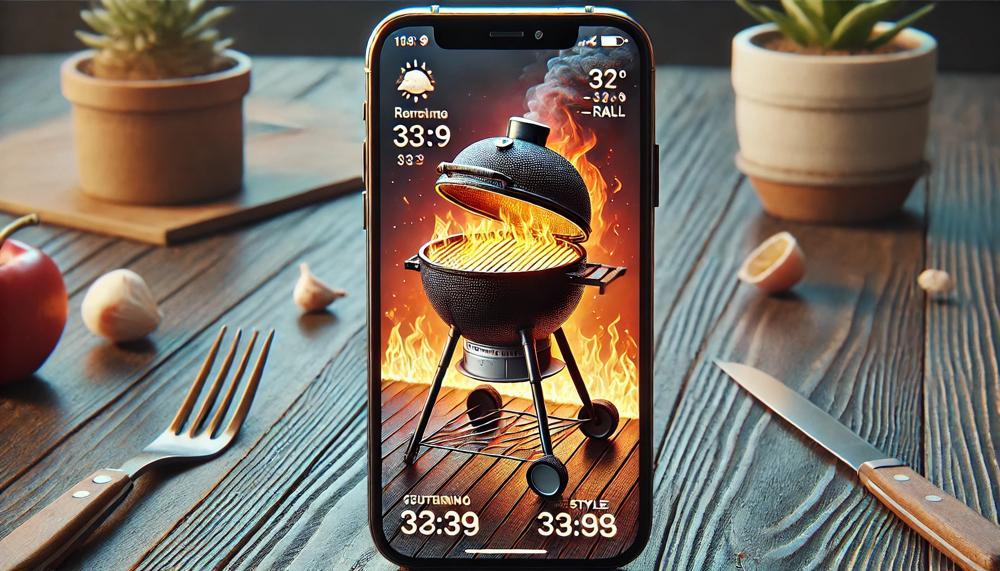
The RTD probe is a vital part of Traeger grills, as it helps regulate and maintain the desired cooking temperature for consistent and precise results. However, if the probe becomes dirty or faulty, it can affect the grill’s ability to maintain a steady temperature. This can lead to uneven heat distribution, affecting the taste and texture of your dishes.
Environmental factors, such as high humidity or dust, can also impact the accuracy of the probe. Additionally, cooking certain foods, such as fatty meats or sugary marinades, can cause buildup on the probe, making it less effective.
To prevent issues with your grill’s control system and ensure accurate temperature readings, it is essential to regularly clean and maintain your RTD probe. Signs that your probe may need cleaning include significant differences between displayed and actual temperatures, longer preheating times, and difficulty maintaining a steady temperature.
It is recommended to clean the RTD probe every three to six months, but proactive cleaning may be necessary based on usage and environmental factors. Proper storage after cleaning is also crucial for optimal performance and longevity of the probe.
Jammed Auger
There are several potential causes for a jammed Traeger Pro 34 auger, including pellet debris, moisture, poor-quality pellets, loose wiring, and motor damage.
To fix the issue, start by checking if the grill is plugged in and the power switch is on. If that doesn’t work, manually clear any blockages from the fire pot and auger tube.
If the auger still won’t turn, inspect the motor pin and wiring for any issues. To prevent future jams, regularly clean your grill and use high-quality hardwood pellets stored in a dry place.
Additionally, consider using an insulating blanket in cold weather to prevent moisture buildup.
Traeger Warranty Policy Notes
| Warranty Coverage | Details | Procedure |
| Basic Warranty | Covers all parts and labor for one year from the date of purchase. | Register the grill on Traeger’s website within 30 days of purchase to activate. |
| Extended Warranty | Extends coverage to a total of four years from the date of purchase. | Proof of purchase required for any warranty claim. |
| Issue: Grill Not Getting Hot | Coverage includes necessary repairs or replacement of defective parts causing the issue. | Traeger may opt to repair or replace the faulty part(s) at their discretion. |
Traeger’s warranty ensures your grill’s performance against defects, including heat issues, under a robust scheme. Should your grill falter in reaching the right temperatures, the warranty backs you with either repairs or a full replacement if necessary.
Remember, activating this benefit involves promptly registering your purchase on Traeger’s website and retaining your purchase proof. This proactive step guarantees you can enjoy your BBQ without fret over potential mishaps.
Conclusion
Navigating the common pitfalls that prevent a Traeger Pro 34 from heating properly can transform your grilling from frustrating to flawless. The key culprits usually include pellet quality, ignition malfunctions, blocked airflow, sensor inaccuracies, and neglect in regular maintenance.
High-quality pellets are crucial as inferior ones burn inefficiently, thereby affecting the grill’s temperature. If the igniter is faulty, the grill struggles to heat up—ensuring this component is functional is essential. Similarly, the airflow must be unobstructed. A dirty or damaged RTD probe can skew temperature readings, leading to under or overcooked meals, thus maintaining and periodically replacing the probe is vital.
Routine cleaning and maintenance, such as clearing the auger and firepot of debris, are preventative measures that sustain optimal grill performance. Environmental conditions also play a role; shielding your grill from wind and cold can mitigate temperature fluctuations.
By methodically checking these aspects—pellet supply, igniter, airflow, sensor integrity, and conducting regular maintenance—you ensure your Traeger Pro 34 remains reliable. Each barbecue session then becomes an opportunity to showcase your mastery over fire and flavor, perfectly encapsulating the essence of a successful grill master’s journey.

